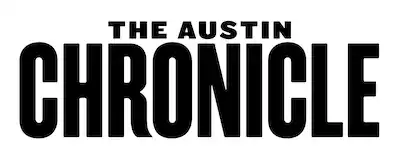https://www.austinchronicle.com/screens/2011-12-09/handicapping-the-holidays-rocksmith/
Handicapping the Holidays
We narrow the field for the gamer on your gift list
By Mark Fagan and Kimberley Jones, December 9, 2011, Screens
Rocksmith
PS3 & Xbox 360Ubi Soft
$80
The Ace:
Rocksmith is the first game to replace those phony plastic guitars of Guitar Hero and Rock Band with actual six-stringers (not included). Utilizing the unique ¼-inch-to-USB cable, players plug in their own axes and begin picking along to a smart song selection from the Pixies, Nirvana, and the Black Keys, as well as locals Spoon and White Denim. The songs start out easy enough, requiring users to pluck a few select notes from the Rolling Stones' "(I Can't Get No) Satisfaction," but ramp up in intensity and difficulty as users increase in skill. I would guess that the learning curve for a beginning guitarist could be steep – as it should be. Being a serviceable guitarist myself, the biggest challenge for me was adapting to the Rocksmith gameplay; it's difficult if not downright impossible to simultaneously follow the action onscreen and look at your guitar. The strings are assigned colors instead of E, A, D, etc., and it took a while to settle in to the gameplay, which owes much to Guitar Hero's trademark cascading notes (though the 21 frets as opposed to the five buttons up the complexity of play considerably). Once I got a feel for the game, I progressed rather easily through the levels, unlocking new guitars, techniques, amps, and larger venues along the way. Mix and match the equipment and effects in freestyle mode if you just want to use your TV as an amp. In "journey" mode, you rehearse a set of songs, perform them well enough to qualify and move forward, and then play a gig; rock hard enough and you earn an encore. Then repeat over and over, adding songs to your repertoire and more screaming (mainly female) fans along the way. I enjoyed the song selection, which could've been a deal breaker (additional songs are available for download at $2.99 a pop), and I hardly noticed the hours whiling away as I compulsively strived to accrue Rocksmith Points and advance up the indie-rock ranks. It's a fun game and decent guitar practice for someone with some six-string knowledge, but I wouldn't say I'm a better guitar player today than I was pre-Rocksmith. – Mark Fagan
The Novice:
Prior to my tangle with Rocksmith, I'd never picked up a real guitar before. But I can rock a mean plastic axe, and that familiarity with Rock Band's interface – the scrolling notes, the color-coding – is pretty much the only thing I had going for me. If the Fender Telecaster I had strapped around my neck wasn't borrowed, I might have smashed it in frustration. Patience. Rocksmith is remarkably adaptable to a newbie smithy's lack of talent, continuously adjusting within a single song to an easier or harder degree of difficulty according to the gamer's proficiency. Those first few song attempts were brutal, but eventually I got the hang of it and rather enjoyed the new feeling of calluses forming as I tried to if not quite master, at least not too badly mangle the eclectic catalog, which ranges from the Cure to Best Coast to Sigur Rós. Beware the "journey" mode, though (a name that whiffs more of a spiritual meditation course than rock-star shenanigans): The game is ruthless about requiring a certain level of competency before a player can advance, which means you're just gonna have to keep playing "Higher Ground" until you get it right. (By my fifth attempt, it had started to sound like the soundtrack to Dante's Seventh Circle of Hell; god knows I wanted to do some serious violence to the Red Hot Chili Peppers.) But that mode can be broken up with minigames that, under the guise of pure fun, actually improve your technique, as well as short video tutorials that give a tease of the advanced work – bending, chords – still to come. A final caveat: If you're hoping to use Rocksmith as a teaching tool, in the beginning levels, at least, there's very little real-world application, unless sheet music makers start replacing notes and strings with numbers and colors. – Kimberley Jones
Copyright © 2025 Austin Chronicle Corporation. All rights reserved.
